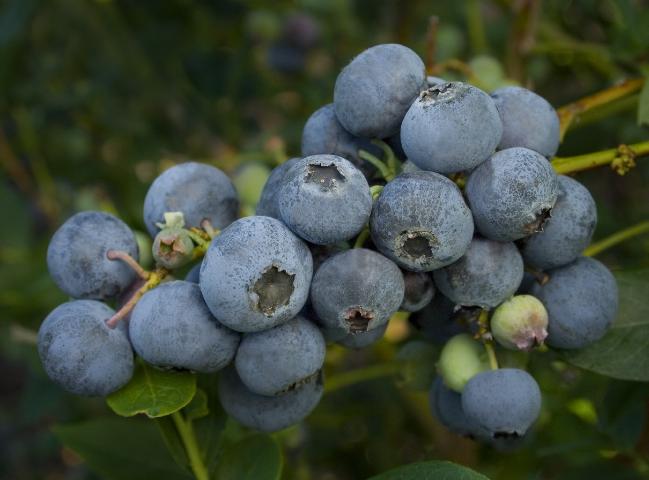By Clint Thompson
Blueberry plants lose half of their phosphorous during harvest. Additional research at the University of Florida Institute of Food and Agricultural Sciences is needed to determine what it means for management of the nutrient in future seasons.

Gerardo Nunez, assistant professor at UF/IFAS, discussed phosphorous management during the blueberry field day on March 9 in Citra, Florida.
“We expect to have better answers over time, but phosphorous research takes a bit of time, because our Florida soils are very rich in phosphorous. For me to have no phosphorous or little phosphorous control, I’d literally have to plant years to mine that soil clean before I’d get to run the experiment. We don’t have answers for timing for phosphorous yet,” Nunez said. “What we expect is the best time to replenish the plant is going to be after harvest. That will be the time when the plant is searching for phosphorous, because it has just lost some.”
Much of the current blueberry information is derived from research conducted in the pacific northwest. It has been determined that the majority of phosphorous is removed at harvest. But their soils and weather conditions are much different than Florida, and the season is shorter. Part of Nunez’s ongoing research is to determine if a one-time application after harvest is sufficient enough.
“I think blueberries are an interesting case, because being in acidic soil, they are in an environment where phosphorous in the soil is going to get coupled with iron and with aluminum. We don’t care so much for aluminum, because it is not necessary for plants, but the phosphorous that ties up iron can actually make an iron deficiency,” Nunez said. “It ends up being a double whammy there. You have the possibility for the plant to be at the same time phosphorous and iron deficient. That’s obviously not ideal to the plant.”
Annual soil tests are essential to producers maintaining appropriate phosphorous levels in their plants.
“Phosphorous is one of the elements found in the DNA of the plant. You will see phosphorous in every cell of every plant. A plant that doesn’t have phosphorous sees all of the machinery of the cell compromised,” Nunez said. “When we think about phosphorous, we think about the whole plant. The phosphorous inside the plant is very easy to mobilize. If the plant needs phosphorous in the leaf, it will pull it from the roots and put it into leaf.”









